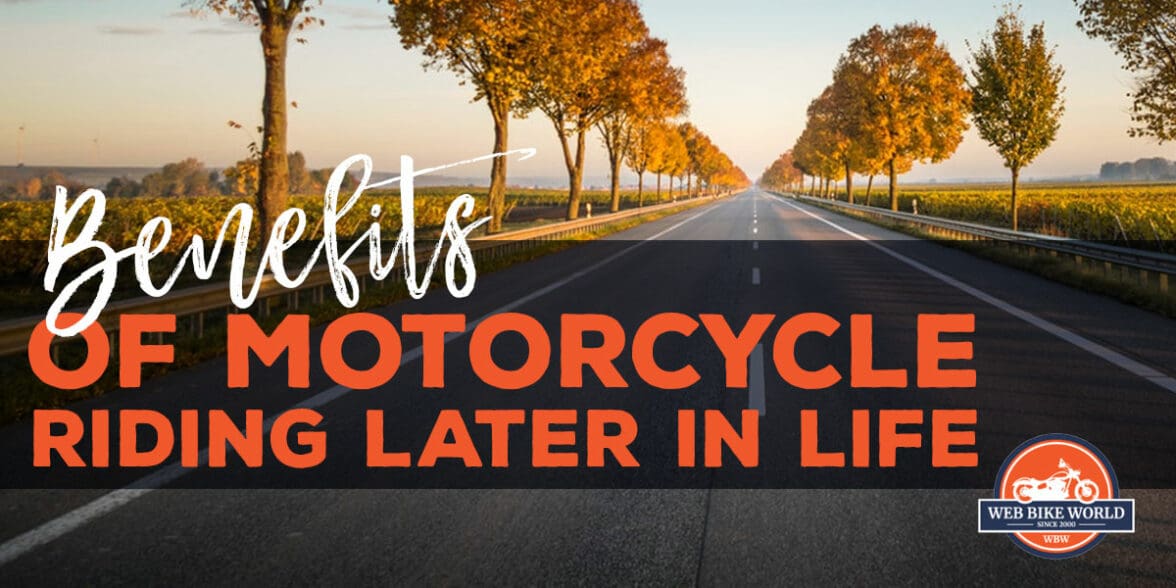When you picture your golden years, you might never have imagined that some of your best days would be spent cruising around on a motorcycle, but that is exactly what more and more people are doing later in life.
California Department of Motor Vehicles data shows that baby boomers make up 56 percent of the almost 1.4 million Californians licensed to operate motorcycles, while only 30 percent of Class M licenses are held by people ages 16 through 40. There are many factors that might contribute to the larger number of older riders.
Why Start Riding
After 40 is the time when most parents become empty nesters, which affords not only more time to enjoy hobbies like motorcycle riding but also the disposable income that can make owning a recreational vehicle like a bike or a trike possible.
After a decade or two of cruising around in family-friendly minivans and SUV’s from soccer practice to dance class and every other extra-curricular activity, motorcycles are a great way for a couple to reconnect and begin to explore the sites, scenery, and activities that they didn’t have time to enjoy when raising a family.
A Great Way to Unplug
For most people, a motorcycle represents freedom and even that little bit of rebellion that we all hope is still alive somewhere inside the responsible adults that we have become. Just taking a few hours for an afternoon ride can leave you feeling relaxed and rejuvenated.
Riding offers you time to unplug from email, text messages and the rest of the world to focus just on what is around the next curve. And taking a long weekend just to explore and unwind can feel as good as any week of vacation that you can recall. There are actually some very simple reasons why bike enthusiasts experience this clarity after a ride.
Mental Benefits
Dr. Michael Russell has been riding motorcycles for over four decades and has witnessed many of the mental health benefits of riding over his career. He refers to riding as a meditative activity as he explained in an interview earlier this year.
“The attention needed to ride safely but with ‘energy’ requires near complete concentration,” he explains. “The mental demands of riding can help keep your mind clear and sharp, while the brotherhood that exists among bikers is very genuine. Riding with brothers (and sisters) provides significant psychological relief from excessive worry.”
Physical Benefits
In addition to mental health benefits, riding also offers some very important physical health benefits. Riders need to maintain at least a minimal level of physical fitness to enjoy riding. There is some walking involved, as well as the fitness level needed to get on and off the bike, don riding gear and to have the stamina for the ride itself.
Riding also requires a certain degree of strength and balance, which is used and practices with each adventure. And possibly the biggest physical health benefit is that motorcycle riders need to have quick reflexes to avoid possible dangers.
As mature adults, we all know and understand that staying in good shape will help to keep our reflexes faster which will also help to keep us alive in the event of a car suddenly stopping or swerving into our lane.
Making Smart Choices
And that same mature thought process is also what we all rely on to tell us when we have reached the time to make some changes in our riding or to close that chapter of our lives. It is critical that each rider be honest with himself or herself about both physical and mental capabilities needed to ride safely.
This can mean electing not to join the group for a ride on a cool day when a trick hip is giving you problems or when you are experiencing some vision issues. Or it could mean that it’s time to trade in two wheels for three.
Three-Wheeled Options
Trikes are the large three-wheeled motorcycles that many older riders are turning to for the added stability and comfort that they offer. In addition to the added comfort for riders, these larger yet still sporty vehicles offer a multitude of storage and cargo capacity as compared to a two-wheeler. This makes them a great option for an overnight trip or a long weekend.
The Can-Am Spyder and the Polaris Slingshot have also entered the three-wheeled arena as rivals to the trike industry leading Tri Glide and Freewheeler models from Harley Davidson.
Check Out the Market
What might surprise some riders who are considering the addition of a third wheel, is the cost of these bikes. The cruiser touring models of the Spyder line start at just over $26,000 while the Slingshots come in at about $20,000 for a base model. And as always, the Harley holds an impressive price tag at over $34,000 for a new Tri Glide Ultra.
To put this into perspective, the average sport touring two-wheel bike will run you between $10,000 and $15,000 in the states, while the superbikes are going to come in at anywhere from $15,000 to north of $30,000 depending on the brand and your need for speed.
Live the Dream
Regardless of the type of bike that you choose, the point is that just because you are a little bit older does not mean that you can’t become a motorcycle rider or continue to ride. Older riders simply need to be honest about both physical and mental capabilities and make smart choices about when to ride and even what to ride.
There are many options that can offer more comfort, easier maneuvering and require far less balance and strength sport bikes or large cruises. Riders just need to find the perfect bike to fit their needs later in life so that they can begin to continue to enjoy all of the benefits of motorcycle riding.


